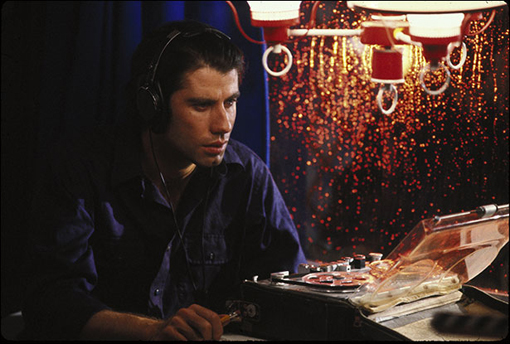2013. GB. Blu-ray. Arrow Video. 108 minutes + 100 minutes of extras. £19.99
 About the reviewer: Dr Alex Marlow-Mann is Lecturer in European Film at the University of Birmingham and Acting Director of B-Film: The Birmingham Centre for Film Studies. He is the author of The New Neapolitan Cinema (EUP, 2011) and editor of Archival Film Festivals (St Andrews Film Studies, 2013). He is also one of the founding members of the British Association for Film, Television and Screen Studies (BAFTSS).
E-mail a.p.marlowmann@bham.ac.uk
About the reviewer: Dr Alex Marlow-Mann is Lecturer in European Film at the University of Birmingham and Acting Director of B-Film: The Birmingham Centre for Film Studies. He is the author of The New Neapolitan Cinema (EUP, 2011) and editor of Archival Film Festivals (St Andrews Film Studies, 2013). He is also one of the founding members of the British Association for Film, Television and Screen Studies (BAFTSS).
E-mail a.p.marlowmann@bham.ac.uk
Released in 1981 immediately after Dressed to Kill (1980) and before Scarface (1983), Blow Out marks a point of transition from the horror/thrillers with which writer-director Brian De Palma made his name in the 1970s to the crime and gangster films with which he moved further into the mainstream in the 1980s and 1990s. Although chronologically it belongs to the new decade, its feel is very much of the Seventies (despite its opening slasher film pastiche – a typical De Palma touch).

The film deals with a movie sound effects specialist working on low-rent slasher movies, Jack Terry (John Travolta), who inadvertently records a political assassination and uncovers a conspiracy; in so doing he puts both himself and Sally (Nancy Allen), the young woman who was in the car with the Senator at the time and with whom he soon falls in love, in jeopardy. Thus the film gestures towards the paranoia and political disillusionment typical of Seventies thrillers like The Parallax View (1974, d. Alan Pakula) and Three Days of the Condor (1975, d. Sydney Pollack), even if it ultimately places less emphasis on the conspiracy than it does on psychotic assassin employed to carry out the hit (John Lithgow, memorably hamming it up as one of the several loons he played for De Palma over the years).

More direct influences, however, are Michelangelo Antonioni’s Blow-Up (1966) – to which the film’s title alludes – and Francis Ford Coppola’s The Conversation (1974) both of which deal with people who become convinced they have recorded evidence of a crime. While Jack’s profession apparently aligns Blow Out more closely with Coppola’s film, once he gets hold of a series of images of the assignation and tries to edit together a film to synchronise with his recording, De Palma explicitly recreates the photographic montage sequence from Antonioni’s film (albeit without the same quasi-philosophical musings about truth and the nature of artistic reproduction). It is arguably in these sequences dealing with cinematic process that the film is at its most fascinating, its exploration of the techniques of sound recording and montage providing the most explicit manifestation of De Palma’s status as a supremely technical director. The night-time scene in which Jack records the assassination, in particular, is a virtual masterclass in filmmaking, using wide screen framing, split-diopters and imaginative stereo sound design to create an extraordinary audio-visual evocation of space that more than equals virtually anything achieved since with surround sound and 3D.
For those who haven’t seen the film, it’s a must see ...
The film today is remembered as one of the De Palma’s best – Tarantino is a huge fan and re-launched Travolta’s career in Pulp Fiction (1994) on the back of his performance here – and after nearly two decades of lacklustre titles it is a reminder of just what the director was once capable of. Although at times De Palma has his tongue planted firmly in his cheek, he also manages to grace this gripping thriller with a surprising touching romance, culminating in an ending that is at once touching, ironic, completely unexpected and supremely perverse.
Arrow’s new Blu-ray release has a beautiful transfer, easily the equal of Criterion’s region-A locked release of last year. Although it lacks some desirable supplements from the earlier release (above all De Palma’s little-seen 1967 feature Murder à la Mod), it also has some wonderful interviews with De Palma’s collaborators, including star Nancy Allen, producer George Litto, composer Pino Donaggio and cinematographer Vilmos Zsigmond. For those who haven’t seen the film, it’s a must see; for those that have only seen it on TV or video, the Blu-ray will be a revelation; for those that saw it at the cinema, well, here’s the perfect opportunity to revisit it.
Alex Marlow-Mann